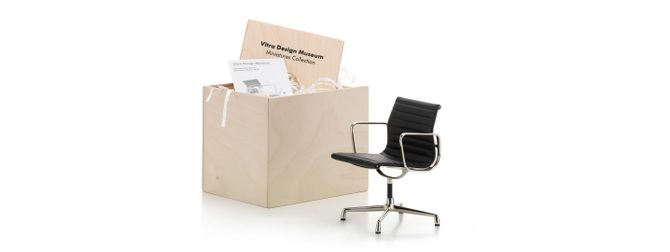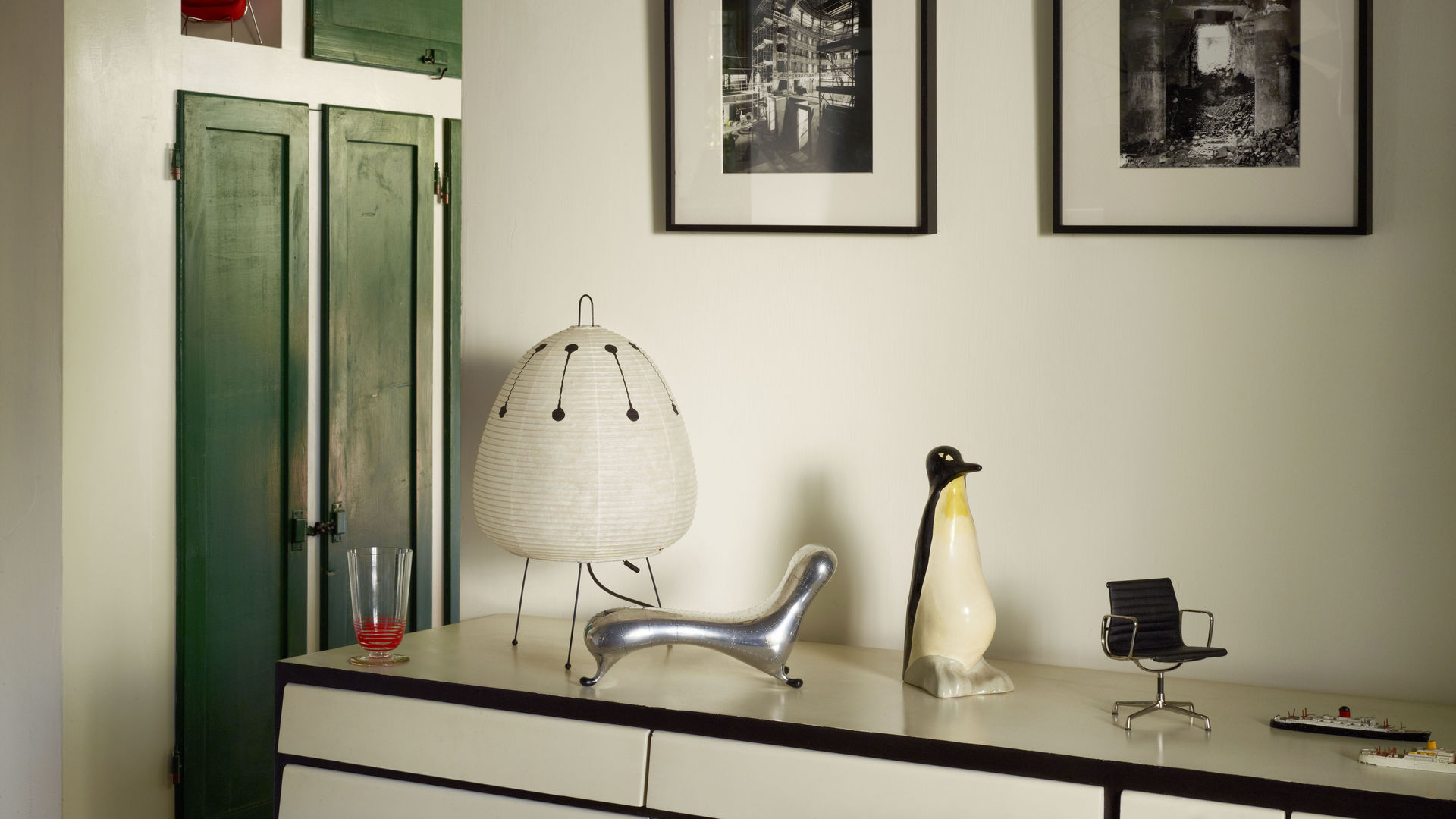
Miniatures Collection - Aluminium Chair
Charles & Ray Eames, 1958
Charles Eames became preoccupied with this problem until one day during a flight he came up with the idea of an aluminium frame construction combined with a material »seat«. He wanted to develop a shape following the natural lines of the body, not however as a hard shell, but as a resilient length of material stretched between two supports which trace the body's natural form. A narrow plastic strip extending the length of the material acts as reinforcement. The material is held in place by insertion into slits on the frame's outer edge.
Experiments with different covering materials later resulted in an upholstered sandwich construction consisting of two layers of »Nauga hide« with a thin filling of vinyl-foam and vinylwadding stitched at intervals of 1 7/8 inches using a high-frequency welding technique. Originally conceived for outside use, the first aluminium easy chairs to be mass produced, are today used solely in interiors.
Informations
| Titre | Langue | File | |
|---|---|---|---|
| Fiche Produit | DE | PDF, 769 kB | Télécharger |
Miniatures Collection
Depuis plus de 20 ans, le Vitra Design Museum reproduit en miniature les jalons de l'histoire du design de mobilier de sa propre collection. La Miniatures Collection englobe toute l'histoire du mobilier industriel – de l'historicisme et de l'Art Nouveau au Bauhaus et à la Nouvelle Objectivité, du Radical Design et du Postmodernisme à nos jours. Les chaises sont reproduites à l'échelle un sixième et reproduisent fidèlement l'original historique jusqu'au moindre détail de conception, de matériau et de nuance de couleur. Cette précision des détails s'applique aussi aux nervures du bois, à la reproduction des vis ou aux méthodes minutieuses de la fabrication artisanale. Ces miniatures sont non seulement de précieux objets de collection, mais également un support pédagogique pour les universités, les écoles de design et les architectes.
